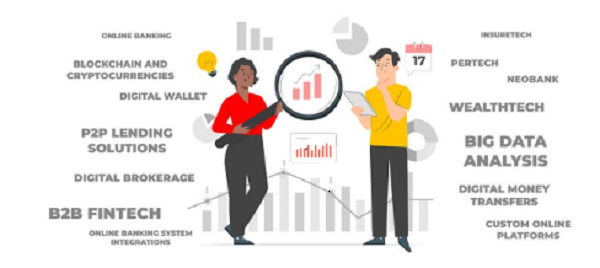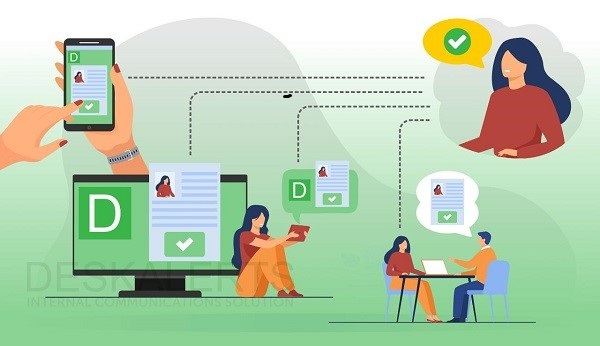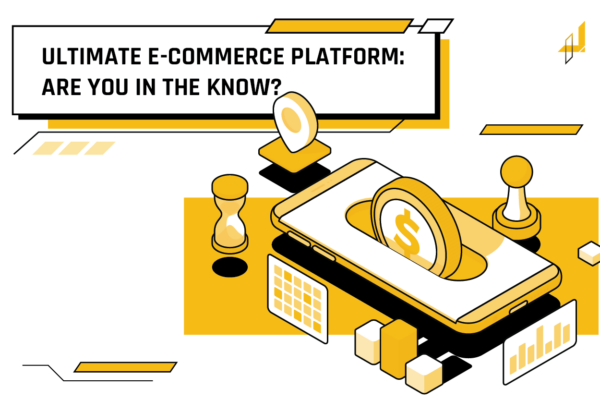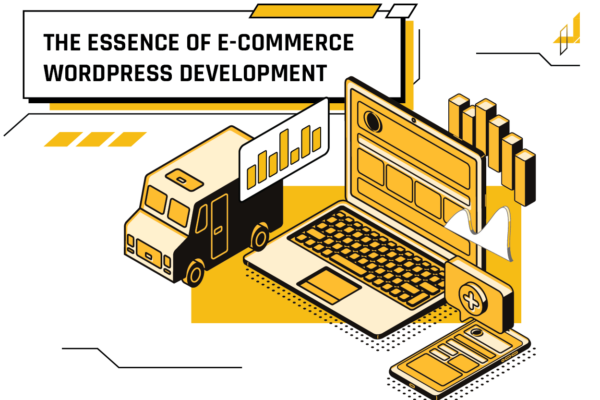
How Financial Services Software Development Can Manage Customer Experience Better In The Digital Age?
Managing client experience is a priority for each banking and financial manager in our available digital age. The new digital tech and changing client attitude have greatly concentrated on client experience in the banking field. So How financial services software development can manage customer experience better in the digital age?
1.WHAT IS FINANCIAL services SOFTWARE DEVELOPMENT?
What exactly do we mean by the phrase “financial services software development”? It is a word that covers several technological procedures.

Figure 1. what is financial services software development?
With the use of technological advancements like AI, ML, and big data, financial services software development entails the deployment of solutions meant to boost staff productivity and enhance and automate financial operations inside the firm.
2.What is Customer Experience in Digital AGE?
Consumer experience (CX) refers to all the efforts businesses and financial institutions make to improve customer satisfaction with their offerings in the digital age. Additionally, it represents the culmination of every encounter a consumer has throughout a usage experience.
Markets&Markets’ study also demonstrates that, when taking into account the correlation between digital customer experience and business, customization at scale may increase revenue for companies in the financial services software development by 10 to 15%.
3. What are Customer Expectations from Digital Age Experience?
3.1. Consider me a human being.
The world is now different. Expectations of consumers/customers also changed. Brands must recognize and respond to the huge shifts in consumer expectations that have occurred over the past several years if they want to succeed in the digital age.
Customers now readily (and perhaps grudgingly) provide brands and businesses with vast sensitive information about their life. They look for something of worth in exchange.
Regardless of which of your channels they select each time, they want you as a company or brand to be aware of who they are, their unique tastes, and their full history of interactions with you. They anticipate that you will continue where you left off when they viewed your website if they decide to contact your hotline or go to your store.
3.2. Give me immediate answers to my enquiries
They anticipate receiving a prompt, ideally real-time response if they send you a message on your Facebook page or website. Imagine asking a salesperson a question in a physical store on a Friday afternoon, and receiving a response on a Sunday morning. To such a service, how would you respond? Undoubtedly, you would disregard that brand. When a company representative contacts them back 48 hours after they submit an online inquiry or fill out a lead-generating form, more than 96% of consumers perform precisely as described.

Figure 2. Give me immediate answers to my enquiries
Customers are not interested in who of your departments is handling any of their particular problems. Therefore, it is more crucial than ever for marketing departments to serve as the watchdogs of the complete customer journey experience and to show leadership in cross-functional teams.
3.3 Engage me only with pertinent information
They look to you as a brand to relate to their interests, comprehend their objectives, and explain how your product or service fits into their lives and how it aids them in achieving their goals. They also want you to demonstrate how your business might help them by demonstrating that you actually understand their struggles. The days when businesses could afford to create advertisements emphasizing “how amazing they are” are long gone. Customers would prefer to spend their online time sharing, commenting on, and reading other beneficial information rather than yours unless you offer them stuff that is helpful.
At the same time, Customers want to know more about you than just what you sell.What are the aims and purposes of your company? Millennials in particular prefer to do business with organizations that have similar values and beliefs to their own.
3.4 Realize my loyalty and reward it
They see your connection with them as one of business, and if they think you don’t value that, they will likely look elsewhere.
Finally, it is crucial to take into account the results of a recent survey, which revealed that 82% of consumers believe that their interaction with a brand is just as vital as the product itself. Having said that, it might be time for many businesses to think about striking a balance between the time and money they invest in creating fantastic goods and the efforts they make to improve the customer journey. There is still a lot of money on the table.
4. Emerging Ways to Enhance the Digital Age Experience
Because half of the global population is using the online internet nowadays, enterprise needs to put considerable effort into improving their digital platforms to retain current users and attract new ones.Although enhancing customer experience is important for financial service companies to scale their revenue growth, it is difficult given that consumers are becoming more aware of the top-notch digital age. So, what can be done when enterprise CX obstacles are escalating every day?
4.1. Enable the online onboarding process
The application for a new account or service is frequently the first step in the onboarding process for new clients, which lasts until the client is thoroughly invested in the business relationship. In comparison to others that haven’t, certain institutions that have automated their application procedures can cut down on duplicate chores and provide clients with a smoother and speedier experience.

Figure 3. Enable the online onboarding process
Modern tools like eKYC (electronic Know Your Customer) are being used by businesses to become more flexible and give clients a quick and painless onboarding process. Customers demand simplicity of use, authentication, and the ability to streamline the account opening process using digital paperwork, therefore eKYC will assist with:
Self-service onboarding: Since the system is run continuously, automatically, and around the clock, users may finish the full procedure at home and at any time.
Offers: Product selections are tailored to meet the demands of individual customers.
Channels: Customers can use a mobile app to access all financial services software development.
Customers who want to increase their credit limit must still visit the representative offices because the eKYC process only allows for a limited amount of credit.
4.2. Prioritize a seamless omnichannel experience
Nowadays, customers want to communicate with companies via a variety of platforms, including websites, mobile applications, call centers, bank branches, and other channels. The development of financial service software must go beyond identifying the best channel mix to ascertain what is appropriate for each particular customer.
Having the same set of services available across all channels, including online and offline ones, is necessary to provide an omnichannel financial consumer experience. The complete omnichannel financial platform also makes it possible to synchronize data in real time between several channels. Customers might, for instance, start the onboarding process through one channel and finish it through another without having to repeat their information.
4.3. Emphasize the product design
Financial institutions have recently added several capabilities to their mobile applications. You must focus on the design of their platforms to make sure that they are user-friendly and feature-rich to prevent confounding their customers.

Figure 4. Emphasize the product design
According to a recent Money Summit study, 35% of customers have changed financial service providers as a result of unsatisfactory app UI interactions. Banks can fix problems by adhering to the following best practices for building financial applications, as crowded product design may be partially to blame for the bad user experience of the app users:
Reduce the number of steps that are redundant or unnecessary and simplify the design so that people may register for an application without feeling overwhelmed.
Design a transparent transaction history; one of the preferred activities for finance consumers using mobile applications is monitoring their balance. It is essential to make this part understandable and straightforward.
Construct financial applications using user-friendly design patterns based on the operating systems (iOS or Android) that the app is created. This capitalizes on consumers’ experience with mobile devices.
In order to draw in more new clients, financial services software development must also stay current with emerging product design trends. Check out our creative suggestions for the design of your financial app here!
4.4. Utilize big data and analytics
You must have a solid understanding of client demands and expectations if you want to improve the software development process for financial services software development. This entails utilizing the data that is currently accessible while creating a 360-degree view of your banking users’ spending patterns, incomes, and spending habits.

Figure 5. Utilize big data and analytics
Making critical business decisions and improving the financial services software development experience both depend on big data analytics. The importance of adopting big data analytics to have a thorough knowledge of these changes is brought on by the growing changes in customer demand. Based on these findings, the company may modify its digital banking offerings to better serve consumers’ unmet requirements and provide unique personalized promos. Furthermore, by using big data analytics, financial service companies may analyze the conversion rate (CR) of consumers and create tailored marketing efforts. A three-stage customization technique supported by cutting-edge data & analytics is the result:
Period 1- Personalize intelligence: Make use of cutting-edge data & analytics on customers, transactions, and other data types to gain a thorough understanding of consumers’ demands.
Period 2- Personalize services: Offer hyper-relevant services and information.
Period 3-Create a user-friendly UI and a compelling CX across all touchpoints to personalize encounters.
4.5. Automate digital customer support
Financial service software development will need to go beyond conventional customer care to chatbots, customer relationship management (CRM), and automated processes in order to better serve the digital client. The case-by-case manual resolution might unnecessarily use up time and resources since consumer inquiries can be numerous and recurring. You can manage the difficulties of many users in real time by automating the customer care process using pre-built scenarios, which will also help you save staff time and lessen your reliance on human customer assistance. The customer support division may focus on resolving critical situations in the meantime, resulting in more efficient procedures.
Secure chatbots are anticipated to become a staple of many financial services software development offerings, especially as FAQs become less practical. AI chatbots may leverage your current database to create some pertinent responses and proactively offer them to users based on information like frequently asked questions from consumers, their most-used services, etc.
5. MAIN SOLUTIONS FOR FINANCIAL SERVICES SOFTWARE DEVELOPMENT TO CONTROL CLIENT EXPERIENCE
5.1. NEW THREATS’ EMERGENCE
The digital revolution has brought a considerable influence on the banking and financial sectors. Traditional banks worked as financial intermediaries relying on brick and branches to engage with their clients.
However, this traditional version has been disrupted by digital innovators. Other agencies emerged as new opponents to banks by providing better ways of conveying financial ways.
5.2. ALTERING CLIENT BEHAVIOR
There has been a better shift in client hobbies and behavior in the available digital age because of the quick enlargement of mobile and connectivity. Clients need more advice and information at their fingertips when they move to their routine lives.
Other clients are less likely to focus on which channel they utilize to work with their financial sector provider. Clients need fast and simple access to service offerings.

Figure 6. Changing customer behavior
5.3. Available state of client experience
Banks have replied to those threats from digital innovators and client behavior transformations by designing their operating versions again leveraging digital platform ways. On the other hand, banks have claimed to offer versions through various channels in anticipation of meeting client needs.
However, there is a basic issue with that version. Those omnichannel digital offerings have specifically transformed the way banks engage with their clients and they have deep ramifications on the client experience.
In addition to that, customers are overwhelmed by engineering attributes and lose vision of better version offerings. Even though customers are inundated with data, they are not aware of the information they are searching for.
5.4. Client journey mapping
To know the client experience, banks want to get a holistic view of the end-user journey from an end-client perspective. Client experience is an aggregation of the client has tracked their lifecycle with the organization. Thus, plants want to concentrate on the client’s cumulative experience through various touchpoints and channels over time.
Besides, banks want to prevent driving disassociated enhancement initiatives at user function levels. Analyzing end-user trips cutting through various departments will make banks uncover the main cause of client dissatisfaction.
5.5. Holistic client experience plan
Here are the steps that reflect an approach to mapping client excursions using Service Blueprinting.
5.5.1. Set a goal
Identify the target of the Service Blueprinting and consider the scope of the client trip of the service offering.

Figure 7. Set goals
5.5.2. Determine personas
Determine various personas (representative client types) from the client population. Next, identify the properties, attitudes, demands, and expectations of every persona.

Figure 8. Identify client personas
5.5.3. Map client journey
Map end-to-end client journey for the particular persona from the end client perspective. Contain client activities and service responses between an onstage and backstage employee at various phases of the client excursion. Catch the client’s state of mind along with the client’s excursion.
5.5.4. Determine the gap
Identify client satisfaction levels through various phases of the client excursion. Try to identify gaps from realistic to expected client experience.
5.5.5. Standardize journey
Standardize and streamline the client journey. You can prioritize more activities up to the gap in client satisfaction and client cruciality.
Final thoughts
That is all about how financial services could control client experience better in the digital age. We hope that you can find it useful to know more about financial services and finance software development in Ho Chi Minh city so far.
Sources: Internet
——————————-
L4 STUDIO – LEADING SOFTWARE DEVELOPMENT COMPANY IN VIETNAM
Website: https://l4studio.net/
Email: hi@l4studio.net
Phone: (+84) 28 6675 6685
Our Website Development Services: https://l4studio.net/website-development/
For more interesting blogs: https://l4studio.net/it-knowledge/
Follow us at: https://www.facebook.com/L4Studiovn/
Read more: Benefits Of Outsourcing Fintech Software Development








